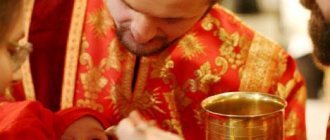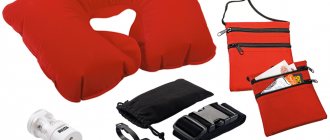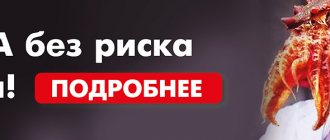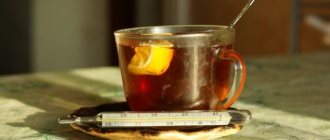Thread lifting - what is it?
Thread lifting is a face and body lift with implants in the form of threads, which are made from so-called biocompatible materials. Basically, these are synthetics (precious metals in the original models), which “take root” in the body and do not cause tissue rejection.
The threads can be absorbable or non-absorbable - with both, the procedure is approximately the same. A hollow cannula needle is inserted into soft tissue (usually into the dermis, the middle layer of skin), a channel is made, a thread is inserted into this channel and it is secured in one of the possible ways. The thread tightens the skin, and the lifting effect is noticeable immediately after the procedure. Then it will only manifest itself more strongly - due to the fact that metabolic processes always occur faster in injured tissue and cell division is more active. So within a month, the implant threads are completely overgrown with dense connective tissue - this is what makes the skin elastic and smooth. By this time, the thread itself will disintegrate - compounds useful for the body will be absorbed by the cells, and unnecessary fluid will be removed from the body. Absorbable implants are thus placed for a short period of time and have a short service life, no more than two months. The lifting effect occurs more due to the body’s own resources - the younger the woman, the better the result of the procedure will be.
Non-degradable implants work differently. After reinforcement, the main load will fall on them. Such threads - at first they were made of metal like gold or platinum, now from synthetics - after implantation they become the main “supporting structure”. Tissue tension and, accordingly, the degree of rejuvenation depend more on the quality and quantity of implants than on the patient’s age.
Non-absorbable threads are often used in “complicated” cases - with severe ptosis of the face and in certain areas of the body - where the volume of sagging tissue is too large and where a supporting “frame” is indispensable. True, doctors say that threads are rarely placed on the body - even if the patient has indications for the procedure, he should be warned that the result will be short-lived. Thread lifting is more appropriate (and useful) on the face with a small degree of ptosis and shallow wrinkles.
Dr. D. A. Gruzdev about thread lifting - video
Types and purpose of various threads
All threads used can be divided into two groups: absorbable and non-absorbable
. The first ones are usually made from polylactic acid. The second ones are made of polypropylene. Both of them can be with or without notches (smooth). How to choose which ones you need? First, let's take a closer look at each type of thread.
Polylactic acid threads
made of material that is fully compatible with body cells. They are subject to hydrolysis (decomposition in water), and after some time (1-2 years) such threads completely dissolve. The lifting effect is created in two stages. At first, while the threads still retain their structure - due to the tension they create. As the threads are absorbed, their own collagen frame is formed in the subcutaneous layer, which subsequently becomes a retaining system.
Absorbable threads can be either smooth or notched. The notches enhance the fixation of the threads under the skin. In addition, they create centers for compaction of connective tissue, which further strengthens the future frame.
Absorbable threads have one undeniable advantage - over time, no foreign elements remain under the skin. This means that if, for example, you want to have a surgical lift, you can choose any method, the condition of the tissue will be similar to natural.
If there are non-absorbable threads
It will be more difficult to perform surgical correction under the skin in the future. At the same time, non-absorbable threads retain the lifting effect longer. They have a clear advantage for elderly patients, when the skin loses the ability to actively synthesize collagen and it is difficult to form its own scaffold on a resorbable basis.
Indications for the procedure
Thread lifting allows you to correct age-related problems and aesthetic imperfections on the face and body.
What can be done with threads - table
| Correction area | What results can be achieved with reinforcement? |
| Face |
|
| Body |
|
Before the age of 30, thread lifting is usually not necessary; at this age, injections of hyaluronic acid, vitamin cocktails or botulinum toxin may be offered to correct minor age-related changes.
The optimal age for thread lifting is from 30 to 50 years, although these age limits are flexible.
The decision on whether or not to carry out the procedure is made by a cosmetologist after assessing the condition of the skin.
The average age of patients who most often receive threads is 35–40 years
Types of threads
General classification
Threads are generally divided into types:
- Non-absorbable , which include gold, platinum, Teflon Gore-Tex and Aptos threads. They differ in that they contain both absorbable base material and non-absorbable material. At the same time, it is perfect for those who want to achieve a long-term effect, because from the introduction of such threads subcutaneously, the tightening effect lasts from 4 to 15 years, depending on the specific brand and variety. But it is difficult to correct them or carry out surgical plastic surgery after them. Therefore, those who just want to see the approximate result that they will get with a surgical lift are better off using other types of threads. Also, after using this method, facial peeling and radio wave lifting are not used.
- Long-term absorbable threads have a prolonged effect from 3 to 6 years. They give a good effect, prolonged action. Examples of this type of thread are Tissulift.
- Absorbable threads dissolve under the skin within six months. But at the same time, within such a period of time they manage to acquire connective tissue, which as a result gives a supporting effect. The duration of such exposure is maximum 3 years. But after them you can use any cosmetic and plastic procedures. Examples of such threads are Happy Lift, Anchor lift, 3D mesothreads.
Types by popularity
If we look at specific varieties, the following are the most popular types of threads:
- Gold/platinum. They are non-absorbable and have a base of absorbable material wrapped in gold or platinum. This is one of the most expensive skin tightening treatments, but at the same time it gives a long-lasting effect, a good effect and does not cause allergies or rejection. If we talk about the disadvantages, in addition to the price, this is the impossibility of using it on thin skin, as well as the fact that the material remains under the skin for life. Sometimes there were cases of “breakage” of the material under the skin after the expiration date.
- Conical - those that have peculiar cones at the end of the thread. Thus, the material has improved fixing characteristics and the threads hold the fabric better. this type of thread is considered one of the most popular, since the effect of use lasts about 7 years. The material dissolves within about 10 months, during which time reliable fixation is ensured and the threads become overgrown with connective tissue. The processes of elastin and collagen synthesis are launched in the skin, and therefore the rejuvenation effect can last for a long time.
- 3D mesothreads are a way to tighten the skin and recreate the reinforcing effect. Consists of absorbable material. Their use combines mesotherapy with tissue strengthening. This allows you to give the most optimal result and last up to 2 years. The short period of action is the only disadvantage of the procedure. But it perfectly rejuvenates, strengthens, tightens the skin, does not provoke allergic reactions, and is also inexpensive.
- 4D mesothreads are considered effective even when used in patients with thick skin or severe signs of aging. they help straighten nasolabial folds, eliminate sagging cheeks, shape cheekbones, eliminate a double chin, and restore facial contours. Such mesothreads have notches for better fixation in tissues, are more durable and thick. Accordingly, they cannot be used on thin skin.
- Smooth can be of different types. They are distinguished by ease of administration and the least discomfort among other varieties. The effect will depend on the composition. Many of them are good to use when the patient has thin skin. But on the other hand, unlike analogues of spiral, conical and other types, such material has less fastening and elasticity characteristics.
- Spiral threads have good fixing properties, as well as increased elasticity. They are most often used in the area of the cheekbones and cheeks, that is, in those places where the skin stretches the most. But in other areas it is irrational to use such threads due to the anatomical features of the tissues and the structure of the face.
Each variety requires use and certain effectiveness in specific areas. They can be used on the face or body as a whole, but will show the greatest effect in areas that correspond to the use of a particular variety.
If we talk about the duration of the effect, it largely depends on the material that was used in the production of a particular brand.
A quick face and neck lift using thread lifting is described in the video below:
Preparation for thread lifting
Before the procedure, the cosmetologist invites the patient for a consultation to conduct an examination and give an opinion whether thread lifting is indicated or not. If the decision is positive, the patient is explained the features of the procedure - the procedure, possible side effects and an approximate result. During the examination, the doctor usually draws a map of the location of the threads in order to plan which threads will be used and how much suture material is needed to solve the patient’s problem.
The price of the procedure depends on the quality and quantity of threads; it is different for each patient
How does the procedure work?
Before starting the procedure, the doctor disinfects the skin and gives anesthesia. If reinforcement is to be done with smooth threads that are placed shallowly, a cooling cream or gel is used as an anesthetic. Local anesthesia is administered under the barbed threads, usually an injection of lidocaine. According to the experience of women, this is the most painful part of the procedure - then the anesthetic begins to act, and almost no one feels pain while the skin is stitched with threads.
The implant thread itself is inserted into a thin cannula needle with a sharp end and quickly inserted under the skin according to a pre-drawn diagram (as a rule, the doctor draws the thread entry/exit points directly on the skin before the procedure begins). When the thread is placed, it needs to be secured. This is done in one of the possible ways:
- if the thread is smooth, it is attached using a knotted method - either to the bones or to dense and inactive subcutaneous tissue, onto which a surgical mesh made of biocompatible synthetic material is first applied. This method of fastening (like the smooth threads themselves) is practiced when lifting the body (chest, abdomen, hips, buttocks) - for better and reliable fixation of the supporting frame;
- if the thread is with clamps, it is simply pulled in the direction opposite to the one in which it was inserted under the skin. This way, knots, hooks or cones placed along the entire length of the implant will “fit” into the right place, so that the ends of the thread do not have to be fixed.
How much the procedure will cost depends on:
- depending on the type of thread;
- on their quantity;
- from the clinic;
- from the doctor's qualifications.
Prices for thread lifting can vary greatly even within Moscow and the Moscow region.
Types of threads - table
| Thread type/Characteristics | What are they made of? | Absorbable/non-absorbable | Form | Cost (for 1 piece) | What area are they suitable for? | Validity |
| Metal threads |
| Do not dissolve | Smooth, without notches | From 10800 rub. | Face, décolleté, abdomen, back of hands | Up to 5 years |
| Spring Tread |
| Do not dissolve | Notched | From 15,000 rub. | Face | 3–5 years |
| Tissulift |
| Dissolve within a year | Braids (braids), without notches | 3500–5000 rub. | Face, inner shoulders, buttocks, thighs | 3–5 years |
| Mesothreads (3D mesothreads) |
| Dissolves after 6 months | Smooth/notched | 800–1500 rub. | Face, arms, thighs, buttocks | Up to 2 years |
| Dermafil happy lift | Biosynthetic material caprolac | Dissolves within 6–9 months | Notched | 20,000 rub. | Face, neck, décolleté | 3–5 years |
| Silhouette Lift | Polypropylene | Dissolves after 6 months | Smooth, with cones | 6000–8000 rub. | Face, buttocks | Up to 5 years |
| Silhouette Soft |
| Dissolve - first the fixatives, then the threads themselves | Smooth, with cone locks | 13,000–15,000 rub. | Face | Up to 5 years |
| Aptos | Polypropylene/caprolactone with added lactic acid | Both soluble and insoluble | Notched | 1400–2500 rub. | Face, hands | From 2 years for absorbable sutures to 5 years for non-absorbable sutures |
What implants look like - photo gallery
Silhouette Lift threads are attached using knots and cones
Dermafil happy lift threads are one of the most expensive absorbable threads
Gold threads are almost never used today; synthetic implants are more popular
Consoles with Silhouette Soft thread allow for stronger fixation of the implant in soft tissues
Cost of non-surgical thread lifting
Depending on the type and number of threads, the cost of one zone can range from 11,000 to 55,000 rubles. The price of one 3D mesothread averages 800-2000 rubles; one Silhouette Lift thread – 6000-8000 rubles; Aptos - 1600-3000 rubles; Resorblift - 1300-2500 rubles.
Non-surgical face lift with Silhouette Soft threads
Face lift with Aptos Excellence Visage threads
Lift without surgery 4D threads made in Korea
Tags: plastic surgery
Market Analytics
- Black Lives Matter movement: reaction and consequences for the beauty industry
- COVID-19 is changing the rules of the game in the cosmetics market
- Beauty of the future: cosmetic innovations 2020
Convenient search for beauty salons on our website
Beauty salons in Moscow Beauty salons in St. Petersburg Beauty salons in Ekaterinburg Beauty salons in Novosibirsk
Latest blog posts on our website
- Naturecream / MATRIXYL3000 - the best skin elasticity stimulator
- Naturecream / SPF in Natural Oils
- Naturecream / Geranium (Pelargonium) oil for skin health and beauty
- Prostye-sovety / Save on a beauty salon: procedures that can be done at home
- Naturecream / Growth Factor - brings back youth?
- Oksana-Lezina / 3 effective abdominal exercises from a fitness instructor for beginners
- Prostye-sovety / Making perfect curls at home
- Prostye-sovety / Which hair removal method to choose
- Naturecream / Wrinkles Puppets
- Naturecream / PEPHA-TIGHT - instant skin lifting
Latest forum topics on our website
- Mrs._Smith / Badly sunburned! What to do?((
- Ice / Is it necessary to combine fitness classes with a diet?
- Antonova / What can be used for hair loss?
- Radio operatorKat / Who was on a protein diet?
- Suzanna / Mesotherapy on the face
Reviews about the procedure Non-surgical thread lifting
- Margarita | 2018-01-29 10:37:59 I had a difficult rehabilitation. I had a lift done with Aptos threads. The bruises and swelling took longer to go away than expected, but the threads had nothing to do with it. Apparently my body is like that.
[Leave a review]
Leave your review of this procedure (it will appear on this page after moderation)
In this form, describe only
your personal
experience of undergoing the procedure.
In order to leave a comment regarding the content of the article, use another form - in the “comments” block at the bottom of the page.
Other articles in this section
| Eyebrow modeling Eyebrow modeling is a very popular procedure in beauty salons. We'll tell you what it is, how it's done, and what items are included in the eyebrow modeling kit in this article. |
| Collagenarium Collarium and Collagenarium - what is it? In this article we will talk about a fairly new and popular phototherapy procedure, how it is carried out, what is the difference between collarium, collagenarium and solarium from each other, what effects can be expected and who can and cannot do it. |
| Face masks in beauty salons A face mask is one of the most common and affordable procedures offered by beauty salons as part of a complex of cosmetic procedures for facial skin care. As a manipulation, a mask involves applying a mixture of components of a certain composition to previously cleansed facial skin for a certain period of time in order to achieve the desired effect. |
| Mesothreads for face lifting Mesothreads for face lifting are one of the modern non-surgical anti-aging techniques that help when conventional cosmetics and popular folk methods are no longer enough to provide the skin with a blooming appearance. Mesothreads can be supplied by either a professional cosmetologist or a plastic surgeon. We will tell you in more detail what mesothreads are, their pros and cons, who are shown 3D mesothreads, how they work and how long the effect lasts. |
| Plasmolifting Plasmolifting (PRP, Plateletrichplasma) is an injection method of subcutaneous administration of platelet-rich plasma from the patient’s own blood, leading to the activation of regenerative processes in the skin. |
| The procedure for correcting facial wrinkles using Botox Wrinkle correction using Botox is used all over the world as a cosmetic procedure. Botox injections are performed quickly and require virtually no rehabilitation, and you can see the results in the coming days after the procedure. |
| Hyaluronic acid in cosmetology: pros and cons Among many cosmetologists and their patients, the most popular product for rejuvenation is hyaluronic acid. Most women claim that “beauty injections” help restore youth and beauty to the skin by eliminating or visually minimizing wrinkles. Is this really so and what truths and myths about hyaluronic acid are actually hidden from prying eyes, we will tell you in this article. |
| Facelift: popular methods, their features and contraindications Over time, facial skin undergoes changes. Small wrinkles, ptosis, sagging, sagging, and age spots appear. Every year the situation will only get worse. To get rid of such problems and prolong your youth and beauty, there are various ways to tighten the oval of the face. We will talk about each procedure more specifically in the article. |
| Facial mesotherapy Facial mesotherapy is popular both in traditional medicine for preventive purposes and in the complex treatment of diseases, and in aesthetic cosmetology for the prevention and elimination of the effects of skin aging and getting rid of cosmetic skin defects. Introduced more than half a century ago, this method has established itself as an excellent alternative to plastic surgery. |
| Botox for eyelashes: what you need to know about the procedure Girls who use mascara for a long time note that the hairs become thin, begin to fall out, and thickness disappears. Build-up can correct the situation. But lately there has been a fashion for natural beauty. In this case, eyelash botox can help. The procedure has many advantages: a long-lasting effect, a safe serum composition that not only does not harm the hairs, but also strengthens their structure. In the article we will talk about indications and side effects, look at photos taken before and after, find out the opinions of experts and reviews of girls. |
Possibilities of thread lifting
You should not expect instant results from thread lifting. The face will change immediately after the installation of implants - this is a fact, but the result can be assessed no earlier than 3-4 weeks, when the swelling has completely gone down and the internal cuts (thread insertion channels) have healed.
Primary improvements:
- reduction of visible wrinkles;
- restoration of a beautiful facial contour;
- raised cheekbones (if the threads were placed in this area);
- elimination of facial asymmetry (if any was observed).
Over time, these positive changes will only become more noticeable - there will be fewer wrinkles, the skin, after being restored, will become more even, smoother, and visually the face will look younger by 2-3 years for sure (radical rejuvenation - by 5 or even 10 years, with It is impossible to achieve this with the help of threads - doctors do not hide this). Implants installed on the body eliminate wrinkles on the hands (on the back of the hands), tighten the skin on the neck, forearms, décolleté, abdomen and thighs.
Thread lifting is more in demand for face lifting; placing threads on the body is ineffective
Recommendations from experts
Threads for lifting the oval face are generally very popular among cosmetologists and plastic surgeons. This is facilitated by their positive properties:
- spiral threads are hypoallergenic;
- less traumatic compared to plastic surgery;
- the threads are introduced under the skin through thin punctures, which heal quickly;
- an experienced doctor is able to carry out the procedure with minimal consequences;
- there is no need for observation in a hospital;
- the result lasts from 1 year to 4 years.
It is worth reading reviews from cosmetologists and plastic surgeons taken from thematic forums.
Reviews from cosmetologists
“I am a dermatovenerologist, cosmetologist, and I have been using thread lifting in my practice for several years. The method itself is unique - I can only compare it with Botox. The result is quite similar to using fillers.
The procedure is not complicated, it can also be performed by cosmetologists - because of this, clients are more willing to apply for thread lifting: they are not afraid that this is some kind of serious operation, after which they need a long recovery. Of course, you also need to contact competent specialists - you simply won’t be able to save money here.
I prefer to combine thread lifting with hyaluronic acid injections after some time - an integrated approach helps to achieve an excellent result, which can be compared to a full-fledged surgical operation.”
“It is important to remember that thread lifts include many different options that serve different functions in aesthetic medicine. If you take thread lifting, then it should be performed in the clinic - you need complete sterility and a dressing room. The reinforcing or biorevitalizing variety is something that can be performed by cosmetologists.
This technique is new, the field is constantly expanding and developing. Nowadays, spiral threads are no longer installed in the middle layer of the dermis, but in the hypodermis and subcutaneous fat - which is less traumatic for the body.
In my practice, I use spiral threads for patients whose facial contours are severely deformed due to aging. Before this, you need to carefully prepare the fabrics. This method is good for patients who have a good layer of subcutaneous tissue.”
With this they are viewing: reviews of laser face lifting.
Reviews from plastic surgeons
“Thread lifting, unfortunately, is not a magic wand that can once and for all deprive the patient of all age-related changes and return the “baby look” to the face. It is suitable for people whose aging process has just begun - and there is no need to resort to full-fledged plastic surgery. They also contact us again, 4-5 years after the previous facelift with threads.
The main advantage of tightening with spiral threads is their versatility; they can be used in several areas of the face. They are usually used to lift the midface to counterbalance ptosis. Folds in the nasolabial area, wrinkles, and folds in the tear trough area are also removed. As a result, it is possible to correct the contour of the face by outlining the cheekbones.
If used in the lower part of the face, then such threads help remove jowls and double chins - but it is better to use other methods for this area (such as SMAS lift).”
“People often contact me for consultations on thread lifting. It is used not only in the face area, but also in the hips, chest, and waist areas - but this procedure is carried out only in plastic surgery clinics; and this operation falls into the category of full-fledged paramedicine.
Very often you can hear the most negative reviews about this procedure. This happens because the expected results are too high compared to the real ones. Many women and men, resorting to this procedure, automatically consider it the answer to everything. Therefore, it is worth remembering that a thread lift is a preliminary procedure before surgery. It helps to refresh the face - but it does not completely remove all age-related changes.
Other negative reviews usually include complaints that the result does not last as long as the cosmetologist or surgeon promised - only 4-8 months. Or that after the operation the face began to look even worse due to an unnatural shape or unnatural facial expressions. However, the latter is only a temporary phenomenon, while the former can be solved by choosing a competent specialist.”
As you can see, in general, reviews of thread facelifts using spiral threads are positive. But we must not forget that before making a decision, you should consult with your doctor and cosmetologist whom you trust.
Rehabilitation period
While you are recovering from the procedure, strictly follow all the doctor's recommendations. The success (failure) of a thread lift depends on your level of discipline. For almost a week you will have to limit yourself to food (try to eat liquid and warm - not hot), talk as little as possible (and if you talk, then without emotions and facial expressions) and control yourself at night - sleep only on your back.
Two to three days after the procedure are usually the most painful; at this time, the threads under the skin are especially felt, and this sensation is not pleasant. There is usually no severe pain if rehabilitation proceeds without complications. To avoid displacement of the threads, doctors recommend wearing a compression bandage - it can also cause some discomfort, but for the sake of the result it is worth being patient. The puncture sites (the beginning and end of the threads) need to be lubricated daily with an antiseptic - Miramistin or Chlorhexidine - until they heal. For 3-4 weeks after the procedure, it is advisable to avoid visiting the pool, solarium and gym, and avoid performing any rejuvenating and skincare procedures in the salon.
What health consequences can there be after thread lifting?
Thread lifting does not occur without consequences. For most patients, these consequences are predictable and include:
- bruises and hematomas that disappear within 1–1.5 weeks. Appear as a result of internal bleeding from capillary threads damaged during installation;
- tissue swelling that subsides on the third day (plus or minus one day);
- disturbance of facial activity, when it is difficult to express familiar emotions with facial expressions. Usually observed while the anesthesia wears off;
- the effect of hypercorrection, when it seems that the skin is overstretched and the face looks unnatural. This is often a deliberate medical maneuver designed to counteract the inevitable subsidence of tissue under the influence of gravity. Within a few days after the tightening, the tissues themselves lower slightly and take a natural position.
Much less often, thread lifting results in health problems for the patient:
- if the threads have moved, bumps and pits are visible on the skin - due to the fact that the tissue is unevenly distributed along the thread;
- if the patient is allergic to the anesthetic and (or) suture material, a rash and irritation will immediately appear in the reinforcement area. First aid is to take antihistamines, then be sure to consult the doctor who inserted the threads;
- inflammation of the channels where the threads are placed. First aid is to take antibiotics if the abscess is extensive. the threads are usually removed;
- the threads contour, that is, they appear under the skin - either completely, or only the ends. The problem can only be solved by removing the entire implant or its fragment;
- the threads shift and “migrate” in the subcutaneous layer - usually this does not happen immediately after the procedure, but six months or a year later. In any case, the implants are removed.
If reinforcement is unsuccessful, the thread may contour - appear under the skin - either entirely or only at the ends
Pros and cons of thread lifting - table
| + | — |
|
|
Facelift with threads: which threads to choose? Reviews
What kind of threads are there?
There are many types of threads that are used for face lifting. They can be divided by type of material. According to this criterion, there are 2 categories - absorbable and non-absorbable threads. In turn, absorbable ones are divided into 2 types - consisting of polylactic acid and polydiaxone.
Disadvantage of non-absorbable sutures
As a rule, in my practice I try not to use non-absorbable threads. Despite the fact that they provide longer-lasting results and never cause an allergic reaction, they have a big drawback. It lies in the fact that scar tissue forms around such a thread. If a patient who has once used a non-absorbable type of facelift material subsequently wants to undergo any plastic surgery, the plastic surgeon may face serious difficulties. When using absorbable threads, such problems do not arise.
European manufacturers, including Aptos, Promoitalia, Resorblift, Silhouette Lift, have studies that their threads do not form scar tissue. Thus, good collagen levels do not interfere with plastic surgery.
The advantage of absorbable sutures
A huge advantage of using absorbable threads is the stimulation of collagen production. Polylactic acid, for example, is the most powerful collagen synthesizer. The natural process of skin restoration begins 1-1.5 months after the facelift procedure.
What are threads used for?
Threads can also be classified according to their mechanism of action. The first group includes threads for biorevitalization. As a rule, these are small thin threads, for example, 3D threads. They do not have a lifting effect, but thicken the skin. They can be recommended specifically for young patients. The second threads are lifting-reinforcing. They have a starting point of fixation and attachment points in the form of cones. They provide reinforcement, that is, they create a powerful frame on the face or neck area, and also have a slight lifting effect. The third group is directly lifting threads.
It is impossible to divide the selection of threads by age, face type or other parameters. The doctor makes a choice depending on the problem the patient wants to solve. Thus, the selection of material for a facelift is an individual procedure.
Preparatory steps
For some patients, before undergoing a facelift, doctors prescribe procedures that will tighten the inner surface of the skin. This is necessary in order to secure the threads well and firmly. Sometimes specialists do this on the same day as the operation, and sometimes at intervals of a month. These preparatory procedures, combined with additional lifting, help the threads attach.
Thread effect
The effect of biorevitalization threads lasts on average about 6 months, while the effect of lifting threads lasts for 2 years. The variation in timing depends not only on the type of material, but also on the patient’s metabolic processes. The recovery period after the procedure ranges from 1 day to two weeks, depending on the individual characteristics of the person.
Possibility of combining thread lifting with other types of rejuvenation
Thread lifting can be combined with other salon procedures, such as:
- biorevitalization;
- mesotherapy;
- botulinum therapy;
- laser skin resurfacing.
It is only important to complete the full course of these procedures before installing the threads. This way the skin will receive the necessary nutrition and hydration, and the results from the installed implants will be more pronounced. After reinforcing the threads until the tissue is completely restored, rejuvenating and healing procedures are contraindicated.











